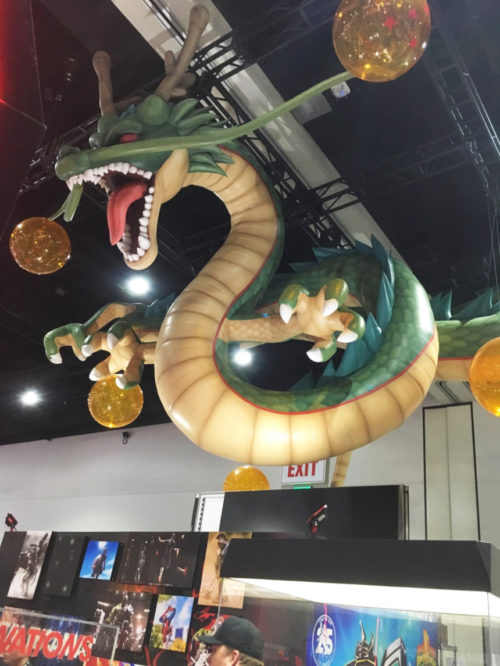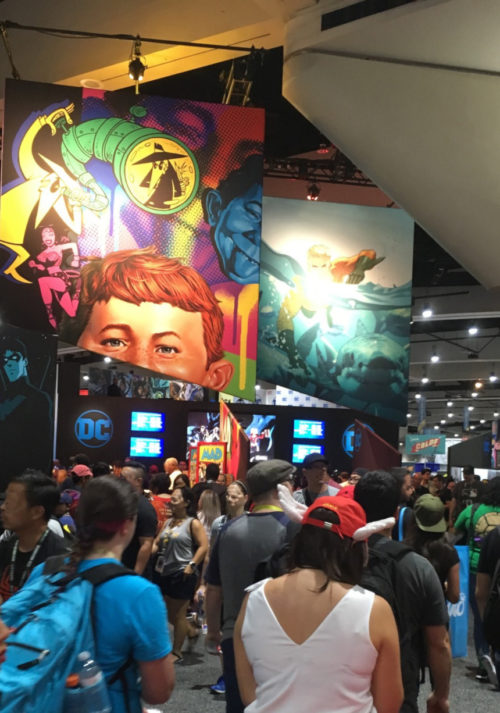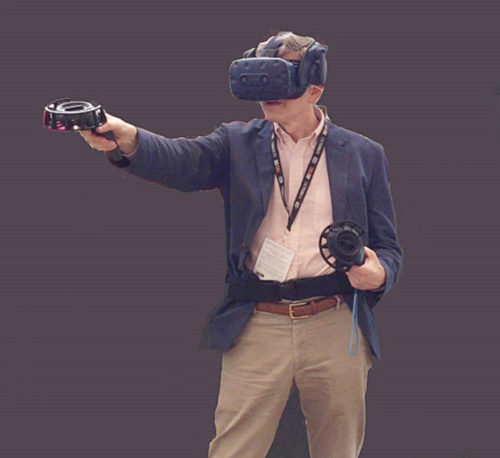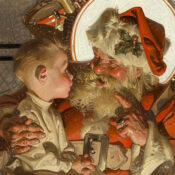Read all of art critic David Apatoff’s columns here.

I go to many art exhibitions each year to learn about developments in the art world, but none of them is more fun than Comic-Con, the world’s first and largest comic convention, which takes place every summer in San Diego.


Comic-Con must be the happiest place in America. 130,000 excited fans of the popular arts — movies, television, comic books, video games and illustration — convene from all around the country to celebrate the next big thing. Creative people working in every medium, from pencil and paper to the latest digital art technology, from costumes to filmmaking, from virtual reality to computer games, compare notes, make deals, and solicit opinions from their most enthusiastic fans. Film critic Nell Minow calls Comic-Con “the Iowa caucuses of popular culture” because it is the testing ground for so many upcoming projects.
A buzzing hive of creativity and commerce, at Comic-Con the sublime promenades arm-in-arm with the vulgar, technology cross-pollinates with whimsy, and adolescent purity of heart is immune to even the slickest corporate publicity campaigns. Some fans show up in costumes, which range from simple, homemade getups to the most elaborate professional Hollywood outfits. Film studios erect statues of cyborgs, rocket ships, and cartoon characters that tower over the exhibition hall. Fusillades of Dolby soundtracks thunder back and forth across the convention center, heralding the birth of competing superhero legends.
One thing you learn at Comic-Con is that illustrated books are being reinvented in forms very different from the classical versions you read as a child. For example, one book can be read the old fashioned way, by turning the pages, but when you view it through the lens of your cell phone, holograms of the characters levitate from the page and talk to you. Hidden creatures pop out from behind trees, and characters provide important clues not contained in the text. New and interactive books and toys are being invented to educate and entertain the next generation of computer-literate children.
One of the most interesting booths was operated by a virtual reality company, DeployVR.
Their “art battle” booth gave me a taste of the future of drawing. Instead of drawing with a pencil, I was able to experiment with drawing in 3D by putting on virtual reality goggles and using a “tilt brush” tool.

I was able to move a line not just up and down or side to side, the way artists have drawn for thousands of years, but also in and out, in three dimensions.
Furthermore, in virtual reality my lines could change colors, sparkle like stars, or crackle like lightning bolts. They could glow or fade in and out. There were dozens of special effects that could be used to create distinctive marks. In the following video you can see a flowering tree being drawn at the booth with the assistance of DeployVR Creative Director Holliday Horton:
Courtesy DeployVR
In the past, audiences needed special goggles or a computer monitor in order to see one of these 3D drawings. The drawing itself was electronic and had no physical existence. Now with the advent of 3D printing, the electronic picture can be “printed” as a physical object in three dimensions. There is no telling where this technology will go as its potential multiplies and its costs decline.
Does this sound like a Brave New World? It is, yet some things never seem to change. One of the headliners at Comic-Con was the artist Kim Jung Gi, who came all the way from Korea to display his drawing skills on a large illuminated screen before a room packed with fans.
Uploaded to YouTube by ArtAnimationMusic
When asked about the source of his inspiration, Kim Jung Ji said (through a translator) that as a boy he came across a book about the American artist Norman Rockwell. He studied that book every chance he got, even taking it with him to the bathroom. He told the audience, “Even today when I feel fatigue or am feeling down or when I want to refresh myself, looking at the classical drawings of Norman Rockwell really gives me a boost to create something good.”
Featured image: Image from DeployVR’s virtual reality 3D drawing tool. Photo by David Apatoff
Become a Saturday Evening Post member and enjoy unlimited access. Subscribe now




Comments
I dare say it does appear thou had a blast at Comic-Con recently. The pictures you took are great. It gives me the feeling of being there too. What you described with the VR goggles and ’tilt brush’ is simply astonishing!
Although young children may be computer-literate now, it’s probably best (for their brains and creativity) to ‘imagine’ the places and characters in the stories first (as traditional), before seeing/hearing it so elaborately done out for them.
It also seems like there was more to it in ’19 than just the superhero shtick/groove they’ve been stuck in for how many years now?? There’s more to art than endless depictions of THAT! The two videos were great, especially the 2nd by Kim Jung Ji. It started out one way, then became something completely different and unexpected. Syd Mead and Bob Peak will probably always remain my two favorite non-POST artists, but it’s nice to see at least SOMETHING fresh and new (even if only occasionally) in this barren century.